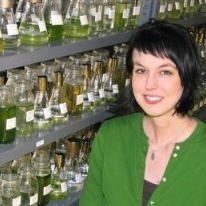Analysis, Detection, and Effect of Algal Toxins in Fresh Waters
A special issue of Toxins (ISSN 2072-6651). This special issue belongs to the section "Marine and Freshwater Toxins".
Deadline for manuscript submissions: closed (30 June 2023) | Viewed by 3486
Special Issue Editors
Interests: harmful algal blooms and proliferations; metabolomics; metagenetics; molecular biology; natural products chemistry
Special Issues, Collections and Topics in MDPI journals
Interests: cyanobacteria; harmful algal blooms; taxonomy; systematics; genomics; HAB management and mitigation
Special Issues, Collections and Topics in MDPI journals
Interests: cyanobacteria; diatoms; marine benthic harmful algal blooms; taxonomy; systematics; genomics; culturing
Special Issue Information
Dear Colleagues,
Harmful algal blooms (HABs) and proliferations (HAPs) are a current threat to freshwater bodies and drinking water resources. Many genera of microalgae, including cyanobacteria (e.g., Anabaena, Aphanizomenon, Cuspidothrix, Dolichospermum, Euglena, Microcystis, Microcoleus, Phormidium, Planktothrix, Prymnesium, and Raphidiopsis) produce suites of pathogenic and potentially lethal secondary compounds, including polyketides, non-ribosomal peptides, alkaloids, and fatty acid derivatives. The presence and abundance of these compounds can greatly impact water quality, fish and mammal health, and local ecologies, resulting in massive fish-killing events that severely disrupt the regional economy. To help mitigate the impacts of toxin-producing taxa, programs are needed to monitor the presence and abundance of HABs, HAPs, and their toxins to understand their effects. This Special Issue of Toxins will highlight manuscripts that present novel methods of analysis to identify toxic algal species (e.g., microscopy, water chemistry), sensitive methods for the detection of harmful metabolites (e.g., liquid chromatography, enzyme-linked assays), and the overall impacts of microalgae and their algal toxins on freshwater ecosystems, from the laboratory to field observations.
Dr. Schonna R. Manning
Dr. H. Dail Laughinghouse IV
Dr. David E. Berthold
Guest Editors
Manuscript Submission Information
Manuscripts should be submitted online at www.mdpi.com by registering and logging in to this website. Once you are registered, click here to go to the submission form. Manuscripts can be submitted until the deadline. All submissions that pass pre-check are peer-reviewed. Accepted papers will be published continuously in the journal (as soon as accepted) and will be listed together on the special issue website. Research articles, review articles as well as short communications are invited. For planned papers, a title and short abstract (about 100 words) can be sent to the Editorial Office for announcement on this website.
Submitted manuscripts should not have been published previously, nor be under consideration for publication elsewhere (except conference proceedings papers). All manuscripts are thoroughly refereed through a double-blind peer-review process. A guide for authors and other relevant information for submission of manuscripts is available on the Instructions for Authors page. Toxins is an international peer-reviewed open access monthly journal published by MDPI.
Please visit the Instructions for Authors page before submitting a manuscript. The Article Processing Charge (APC) for publication in this open access journal is 2700 CHF (Swiss Francs). Submitted papers should be well formatted and use good English. Authors may use MDPI's English editing service prior to publication or during author revisions.
Keywords
- blooms
- cyanobacteria
- harmful algae
- microalgae
- monitoring
- proliferations
- toxins
- water quality
Benefits of Publishing in a Special Issue
- Ease of navigation: Grouping papers by topic helps scholars navigate broad scope journals more efficiently.
- Greater discoverability: Special Issues support the reach and impact of scientific research. Articles in Special Issues are more discoverable and cited more frequently.
- Expansion of research network: Special Issues facilitate connections among authors, fostering scientific collaborations.
- External promotion: Articles in Special Issues are often promoted through the journal's social media, increasing their visibility.
- Reprint: MDPI Books provides the opportunity to republish successful Special Issues in book format, both online and in print.
Further information on MDPI's Special Issue policies can be found here.








